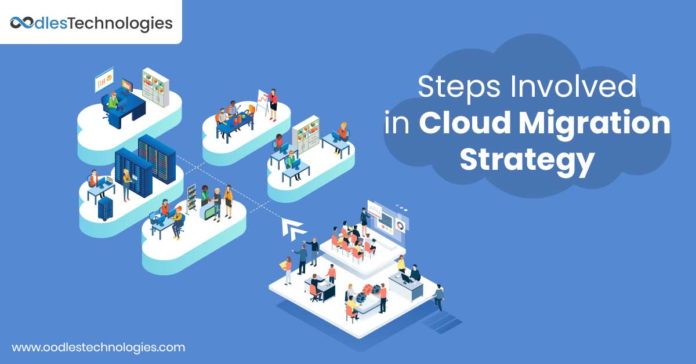Traditionally businesses adopted on-premise hosting to process and store the data because it gave the owners the liberty to control the hardware. With time businesses felt that on-premise hosting is reliable but it is expensive in comparison to infrastructure-as-a-service-module(Cloud). Hosting on Cloud is cost-effective, convenient, flexible, and secure. Cloud Services are inexpensive and provide more flexibility to handle IT infrastructure needs.
According to 2017, Cloud Industry Forum reports overall cloud adoption in the U.K was at 88%.
Main reasons for the rising adoption of Cloud by businesses are:
- Cloud is mature, tried, and tested. Amazon, Cisco, and Microsoft are on-board with stable and mature cloud computing and data centers.
- Requires minimal implementation cost and it’s ROI is easier to forecast.
- Storage on Cloud is less expensive and easy
- Adopting Cloud reduces downtime, infrastructure overhead, and cost
- Enables employees to work over the internet
Migrating from on-premise hosting to the cloud may appear enticing but it is one of the most difficult tasks to accomplish. Netflix is now pioneers in cloud computing but it took them 8 long years to completely migrate from on-prem to cloud.
Are you planning to migrate from on-premise to the cloud? Here are 4 easy steps that you need to follow to easily migrate to the cloud:
The concept of Cloud computing came in the year 2000. Over the years it nourished so well that businesses wanted to use it for hosting applications and data. Various Software-as-a-service companies were formed to enable companies to master the art of cloud migration. In Spite of that, the businesses failed to master the art of cloud migration. If you are one of the companies that failed to master cloud migration then follow these 4 simple steps:
Step 1: Plan
Planning is one of the important steps in cloud migration. In the planning phase businesses have to focus on the key areas including portfolio analysis, program management setup, and cloud architecture and operating model layout.
- Program management setup: It is PMO (Project Management Office) that manages the planning phase. The process starts with strategy building, program governance, and benefits realization. The PMO takes care of leadership commitment, re-structures strategy alignment, supports change management, and facilitates decision-making governance.
- Portfolio analysis: With application portfolio analysis businesses can adequately represent applications in scope. Businesses can use the application dependency information to plan the sequence of application migration. After the analysis is done then the case is pushed to enterprise cloud migration.
- Cloud foundation and Operating Model Layout: There are various landing zones in a cloud foundation. These landing zones include a set of secured cloud infrastructure along with centrally managed services, built-in policies, guidelines, and standards. It is essential to create a stable base through the landing zones to receive a scalable as well as a sustainable enterprise AWS cloud model. Since Cloud computing is becoming the standard for delivering business technology operating models must advance to add cloud-centric capabilities. It is a Cloud operating model framework that amalgamates core elements in a productive, agile, and valuable manner.
Step 2: Assess
This is the second step in cloud migration. In this phase, the applications are analyzed for future disposition. The cloud operating model and architecture are used to lay the foundation for migrations. Let’s explore how the assessment is done:
- Macroanalysis: In this step macroanalysis of business applications happens using the tested cloud readiness and assessment framework with established business value. Cloud suitability and IT efficiency guarantee a clear migration road map. Various other enterprise-wide concerns are identified around security, operations, networking, technical, organizational, regulatory, and financial.
- Microanalysis: After macroanalysis, microanalysis of business applications is done. Microanalysis evaluates the current state architecture and defines cloud architecture based on the patterns that were developed during macroanalysis. A detailed migration plan and effort estimates are prepared after microanalysis is done.
- Cloud Foundation and operating Model Design: Once the macro and micro analysis is done the design is finalized. The design should be such that it meets enterprise security and networking policies. First account and VPC structure are designed based on resource management, cost allocation, and security, ownership, and compliance isolation. The core elements in cloud operating models are the people, technology, and processes. These elements must flourish to achieve the desired cloud operating model goals and increase business value and operations. The people are skilled to be more cross-functional to achieve desired results. Processes are realigned around services and technologies and tools are picked to effectively implement and automate the processes.
Step 3: Migrate
In the third stage, we migrate by implementing operating modules and foundation cloud architecture. When the first set of applications is identified as quick wins they are immediately migrated. The set should comprise of varying complexity of applications across different business units. In this phase, a proactive approach must be taken for change management. Consider the following:
- Setting-Up Cloud Foundation and Implementing Operating Model: In this step landing zones are set up including network connectivity, accounts, policies, IAM Roles, VPC, network connectivity, and deployed workflow. Tools and shared services are also provided. Teams are mapped and key processes are rolled out to the new cloud-centric roles in the cloud operating model. The processes are rolled out with the help of the key learnings from the existing implementations to ensure the installation of selected tools.
- Initial Migration: when the first set of applications are identified as quick wins they are released for migration. If the migration is successfully done then the portfolio is analyzed and added to the confidence of application teams. Also, the foundation is laid down for repeatable migration patterns.
- Change Management: It is important to have effective change management for cloud migration to succeed. Change champions ensure smooth cultural shifts and effective co-creation of the upcoming road maps. To include change champions in the transformation journey they are skilled by conducting knowledge sharing sessions to achieve the results.
Step 4: Scale
Scaling is as essential as migration. After migration scaling of applications is done to accelerate the cloud migration journey. Scalability enables businesses to reduce errors cost and keep a check on security. Consider the following:
- Large-scale Cloud Migration: First the migration factory module is harnessed to target large-scale migrations. The large scale migrations are supported with specialized tools and flex teams that help in bringing reliability and efficiency to the process.
- Optimizing Operating Model: It is important to keep an eye on the cost and optimize it through policies, monitoring, and processes to prevent it from escalating. For it, financial management is streamlined to ensure standardized tagging on all cloud resources.
- Hybrid cloud model optimization: This is a transition phase where cloud and on-premises modules are managed. Further, the cloud module is enhanced and optimized on the bases of services and tools.
Cloud migration is a complex process and businesses take years to completely migrate from on-premise to the cloud.
Are you facing problems in migrating to the cloud? Oodles Technologies provides cloud consulting and application migration services to businesses across the globe. Get in touch with our cloud application developers today!
About the Writer :

Sachin is a digital marketing and content writing expert working with Oodles Technologies since 2019. He is well equipped with the latest disruptive technology trends affecting the physical world. Blockchain, DevOps, AR/VR are some of the revolutionary technologies he has explored and is interested to write about.








